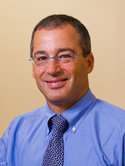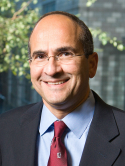Outcome of split-thickness skin grafts after external beam radiotherapy Journal Article
| Authors: | Bui, D. T.; Chunilal, A.; Mehrara, B. J.; Disa, J. J.; Alektiar, K. M.; Cordeiro, P. G. |
| Article Title: | Outcome of split-thickness skin grafts after external beam radiotherapy |
| Abstract: | There are many technical considerations in patients who require radiotherapy after oncologic reconstruction. A traditional tenet is to avoid skin grafts in this setting. However, this is not always avoidable. Therefore, the objective of this study was to evaluate the wound healing and functional outcome of patients in the authors' institution whose skin grafts were subsequently irradiated. A retrospective analysis of all patients treated with split-thickness skin grafts and postoperative radiotherapy at Memorial Sloan-Kettering Cancer Center from 1995 to 2002 was performed. Parameters evaluated included indications for skin graft, defect size, time to postoperative radiotherapy, total radiotherapy dose, delays and interruptions in radiotherapy, wound complications, and the need for further skin grafting. There were 30 patients (23 men, 7 women) with a mean defect size of 152 ± 132 cm2. All split-thickness skin grafts were placed on healthy vascular tissue beds. In most instances (67%) skin grafts were used to cover muscle flaps. Median time to initial radiotherapy after grafting was 8 weeks (range, 4-60 weeks). There was 1 delay and 4 interruptions in radiotherapy treatment. There were 2 partial skin graft losses (<20%) after radiation that healed with conservative treatment. There was 1 complete skin graft loss after radiotherapy that required regrafting. Split-thickness skin grafts can tolerate postoperative radiotherapy without significant complications. Postoperative external beam radiation can begin as early as 6 to 8 weeks after skin grafting. If the requirement for postoperative radiotherapy is known, split-thickness grafts should ideally be placed on well-vascularized muscle beds. Minor skin graft loss resulting from postoperative radiotherapy can usually be treated conservatively without the need for additional surgery. |
| Keywords: | adolescent; adult; clinical article; treatment outcome; aged; aged, 80 and over; middle aged; retrospective studies; surgical flaps; cancer radiotherapy; postoperative care; radiation dose; neoplasms; treatment indication; radiotherapy; muscle flap; retrospective study; postoperative complication; wound healing; conservative treatment; irradiation; outcomes research; graft rejection; skin graft; skin transplantation; beam therapy; split thickness skin graft; humans; human; male; female; priority journal; article; vascular tissue |
| Journal Title: | Annals of Plastic Surgery |
| Volume: | 52 |
| Issue: | 6 |
| ISSN: | 0148-7043 |
| Publisher: | Lippincott Williams & Wilkins |
| Date Published: | 2004-06-01 |
| Start Page: | 551 |
| End Page: | 557 |
| Language: | English |
| DOI: | 10.1097/01.sap.0000123353.71205.43 |
| PROVIDER: | scopus |
| PUBMED: | 15166977 |
| DOI/URL: | |
| Notes: | Ann. Plast. Surg. -- Cited By (since 1996):9 -- Export Date: 16 June 2014 -- CODEN: APCSD -- Source: Scopus |
Altmetric
Citation Impact
BMJ Impact Analytics
Related MSK Work







